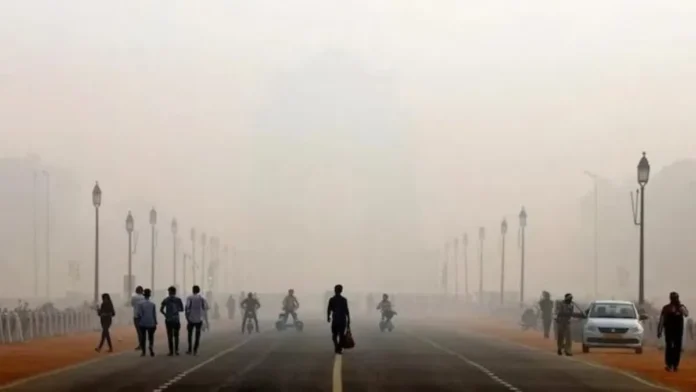New Delhi, notorious for its poor air quality, witnessed a significant deterioration in pollution levels on Sunday night and early Monday morning as firecrackers were set off in defiance of a ban imposed by authorities. PM10 and PM2.5 levels soared to alarming heights in several parts of the city, raising concerns about the adverse effects on public health.
According to data from the Delhi Pollution Control Committee (DPCC), hourly PM10 levels reached 15 to 16 times the 24-hour standard at some monitoring stations. The Jawaharlal Nehru Stadium, a key monitoring location, recorded a staggering PM10 concentration of 1632 µg/m3 at 2 am, far exceeding the 24-hour standard of 100 µg/m3. These hazardous levels persisted from 11 pm to 4 am, before gradually decreasing to 467 µg/m3 by 8 am on Monday.
Similarly, the hourly PM2.5 levels at the Jawaharlal Nehru Stadium were more than 20 times the 24-hour standard during the same period. At 2 am, the PM2.5 concentration peaked at 1423 µg/m3, significantly surpassing the 24-hour standard of 60 µg/m3. By 8 am, the levels had decreased to 383 µg/m3.
Another monitoring station in RK Puram reported a similar spike in pollution levels on Sunday night. The PM10 concentration, which started at 165 µg/m3 at 7 pm, surged to 1380 µg/m3 at 11 pm, before subsiding to 405 µg/m3 by 8 am on Monday.
The city’s Air Quality Index (AQI), a 24-hour average measurement, took a hit, shifting from the ‘poor’ category with a reading of 218 at 3 pm on Sunday to a worse reading of 283 at 8 am on Monday. At some monitoring stations, the 24-hour average AQI reached the ‘very poor’ (301 to 400) category at 8 am on Monday. For instance, Jahangirpuri recorded an AQI of 341, while Lodhi Road registered a reading of 315.
It’s worth noting that the city had enjoyed a brief respite from pollution before the recent spike. Last week, winds and rainfall brought by a western disturbance helped clear the air, washing away accumulated pollutants. This led to New Delhi experiencing its best Diwali day air quality in eight years, with a 24-hour average AQI of 218 at 4 pm on Sunday. In comparison, the AQI on Diwali day in 2022 was 312, 382 in 2021, 414 in 2020, 337 in 2019, and 281 in 2018. In 2015, it was 342, 431 in 2016, and 319 in 2017.
The alarming surge in pollution levels resulting from firecrackers being set off in defiance of the ban highlights the challenges faced by authorities in curbing air pollution during the festive season. It also underscores the urgent need for public awareness and strict enforcement of pollution control measures to protect the health and well-being of residents in the national capital.

